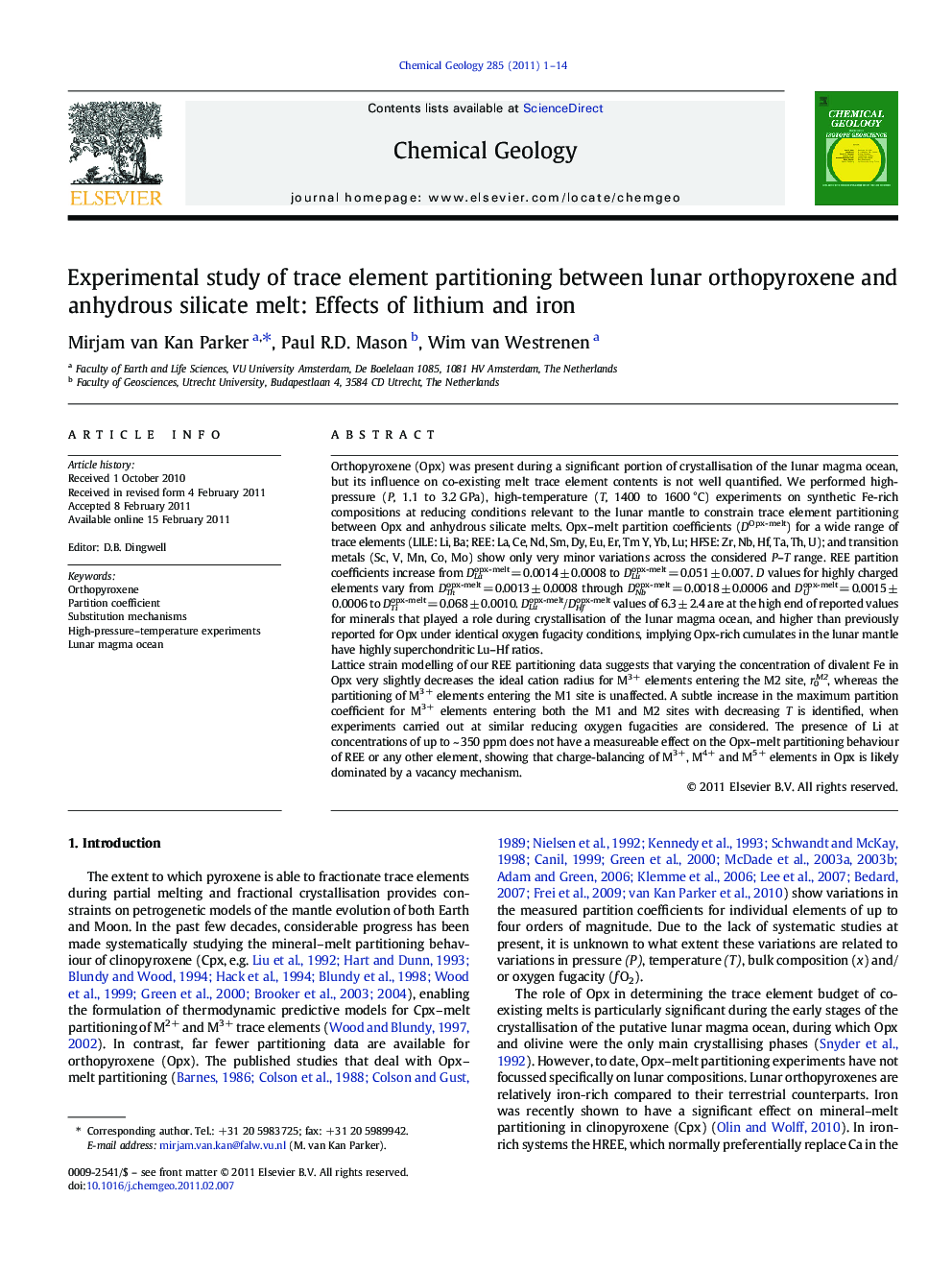| Article ID | Journal | Published Year | Pages | File Type |
|---|---|---|---|---|
| 4699667 | Chemical Geology | 2011 | 14 Pages |
Orthopyroxene (Opx) was present during a significant portion of crystallisation of the lunar magma ocean, but its influence on co-existing melt trace element contents is not well quantified. We performed high-pressure (P, 1.1 to 3.2 GPa), high-temperature (T, 1400 to 1600 °C) experiments on synthetic Fe-rich compositions at reducing conditions relevant to the lunar mantle to constrain trace element partitioning between Opx and anhydrous silicate melts. Opx–melt partition coefficients (DOpx-melt) for a wide range of trace elements (LILE: Li, Ba; REE: La, Ce, Nd, Sm, Dy, Eu, Er, Tm Y, Yb, Lu; HFSE: Zr, Nb, Hf, Ta, Th, U); and transition metals (Sc, V, Mn, Co, Mo) show only very minor variations across the considered P–T range. REE partition coefficients increase from DLaopx-melt = 0.0014 ± 0.0008 to DLuopx-melt = 0.051 ± 0.007. D values for highly charged elements vary from DThopx-melt = 0.0013 ± 0.0008 through DNbopx-melt = 0.0018 ± 0.0006 and DUopx-melt = 0.0015 ± 0.0006 to DTiopx-melt = 0.068 ± 0.0010. DLuopx-melt/DHfopx-melt values of 6.3 ± 2.4 are at the high end of reported values for minerals that played a role during crystallisation of the lunar magma ocean, and higher than previously reported for Opx under identical oxygen fugacity conditions, implying Opx-rich cumulates in the lunar mantle have highly superchondritic Lu–Hf ratios.Lattice strain modelling of our REE partitioning data suggests that varying the concentration of divalent Fe in Opx very slightly decreases the ideal cation radius for M3+ elements entering the M2 site, r0M2, whereas the partitioning of M3+ elements entering the M1 site is unaffected. A subtle increase in the maximum partition coefficient for M3+ elements entering both the M1 and M2 sites with decreasing T is identified, when experiments carried out at similar reducing oxygen fugacities are considered. The presence of Li at concentrations of up to ~ 350 ppm does not have a measureable effect on the Opx–melt partitioning behaviour of REE or any other element, showing that charge-balancing of M3+, M4+ and M5+ elements in Opx is likely dominated by a vacancy mechanism.
Research highlights► New Opx partition coefficients for a wide range of trace elements derived at high P–T. ► Used experimental starting compositions relevant to the lunar mantle. ► Presence of iron decreases the ideal cation radius for the M2 site. ► Lithium does not aid charge balancing substitutions at concentrations of 350 ppm.
